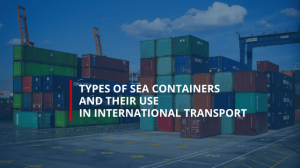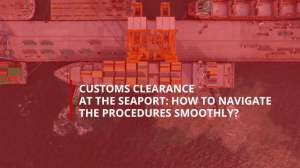

28/03/2025
Anti-dumping duty – what is it and why is it applied?
Anti-dumping duty – what is it and why is it applied?
Anti-dumping duty is an additional charge imposed on goods imported into the European Union when their price is lower than the actual production cost in the exporting country. These artificially low prices result from what is known as dumping—an unfair trade practice that can destabilize the market and harm local manufacturers.
Why does the EU impose anti-dumping duties?
The main reasons for applying anti-dumping duties include:
a) Protecting domestic producers – preventing damage caused by an influx of cheap foreign goods,
b) Ensuring fair competition – eliminating unfair pricing practices,
c) Market stability – enabling European companies to continue developing and investing.
How is the anti-dumping duty rate determined?
The amount of anti-dumping duty depends on several factors:
Level of dumping – the greater the difference between the export price and production cost, the higher the duty.
Impact on the EU market – the European Commission assesses whether cheap imports harm European businesses.
Type of product – some goods are subject to higher duties due to their significance in the EU market.
Anti-dumping duties can range from a few percent to over 60% of a product’s value. For example, electric bicycles from China are subject to duties exceeding 60%, significantly increasing their price in the EU market.
How to check if a product is subject to anti-dumping duties?
Importers can verify whether a product is subject to anti-dumping duties by using:
TARIC database – the official EU tariff database,
ISZTAR system – a tool provided by Polish customs authorities,
Access2Markets – an EU platform with customs regulations,
European Commission website – with updates on anti-dumping investigations and decisions.
Who is affected by anti-dumping duties?
Anti-dumping duties apply to importers and exporters of goods considered to be dumped in the EU market. These measures target countries suspected of engaging in unfair trade practices.
Examples of countries and goods subject to anti-dumping duties:
China – ceramic tiles, bicycles, aluminum foil, aluminum radiators, pallet trucks,
Russia – steel pipes,
Indonesia – stainless steel,
Taiwan, Turkey, Vietnam – stainless steel, especially when suspected of circumventing anti-dumping measures.
What products are most commonly subject to anti-dumping duties?
The EU frequently imposes anti-dumping duties on:
Ceramic tiles (floor and wall tiles, mosaics),
Bicycles (traditional and electric),
Aluminum foil,
Aluminum radiators,
Steel pipes,
Glass fiber mats,
Tungsten electrodes,
Ceramic tableware,
Suede leather.
These products are subject to duties due to dumping practices by exporters, which distort competition in the EU market.
How do anti-dumping duties impact importers?
Importers need to consider the possibility of anti-dumping duties on their goods, which affects:
Higher import costs, potentially increasing prices for customers,
Financial risk, as duties can change suddenly,
The need to monitor EU regulations and adjust import strategies accordingly.
Can anti-dumping duties change?
Yes, anti-dumping duty rates may change depending on market conditions and the results of European Commission investigations. It is essential to stay updated on current regulations to avoid unexpected costs when importing goods.
Conclusion
Anti-dumping duties are an important tool for protecting the European market from unfair imports. Importers should monitor regulation changes and check duty rates before bringing goods into the EU.
As a Polish company, we specialize in customs clearance and tariff classification. If you need support in handling customs procedures and verifying duty rates, contact PKS International CARGO S.A.!
ARE YOU LOOKING FOR A CARRIER TO DELIVER YOUR CARGO SAFELY?
Contact our expert who will answer all your questions:





